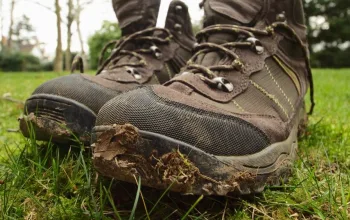Storage
Always dry your tent completely before storing it in a cool, well-ventilated, dry space. If you’ve packed up in the rain or even early in the morning before the dew has dried off it, then you must unpack and dry out the tent properly when you get back home.
Ideally tents should be loosely folded together during storage but as this is rarely possible due to space considerations, they can also be stored in their packsack.
Do not store a tent on a PVC floor or in direct contact with PVC materials, oils, or fuels (gas canisters, etc.)! The gasses emitted from these materials contain plasticizers that can damage your tent over time.
Take care that sharp objects (stakes or poles) don’t push into the tent fabric. The best option is to roll the poles up (in their own bag) carefully in the tent.
Cleaning
If the tent gets very dirty, you can soak it in luke warm water (in the bath tub or shower). Do not use laundry detergent or other cleaners.
Never launder a tent in a washing machine!
After thoroughly soaking the tent, wash the dirty areas with a solution of Nikwax Tech Wash and water. A soft brush works well for this.
Let the solution soak in for about 5 minutes, then wipe down the tent with a wet cloth. Rinse the cloth out thoroughly as you work.
After cleaning the tent, treat it with Nikwax Tent and Gear Proof.
Tip: UV Protection
You can use Nikwax Tent and Gear Solar Proof to effectively protect the tent from damage due to the sun’s UV radiation.
Seam Sealing
Set up the tent in a dry, well ventilated location.
All surfaces that will be treated with seam sealer should be clean and taught.
Apply seam sealer from the inside to all seams.
A brush with stiff bristles or a small sponge work best for applying the sealer.
Use sparingly and allow to dry for 12 hours.
Tip: Seam Sealer
Use Silicone Seam Sealer on siliconised tents; PU Liquid Seam for PU fabrics (when resealing is necessary or small holes must be sealed).
Condensation
One of the reasons your tent needs to be thoroughly aired and dried at home is that even on hot dry camping days it can get damp – on the inside. This is caused by condensation. It is generally warmer inside the tent than outside, because the people sleeping in it give off heat. In addition, there is also an increase in the air humidity or the amount of water vapour – due to breathing, transpiration and possibly rising ground damp from the ground warmed up during the day.
The smaller the tent, the greater is the effect – on account of the lower volume of air in the tent.
Less air movement (a lack of wind will limit the effect of ventilation holes) also leads to a larger amount of water precipitated. For this reason, it is recommended to leave additional parts of the entrances to the tent open. These can be guyed to prevent any rain getting in.
This effect is intensified with silicone-coated tents since silicone – unlike polyurethane (PU) cotton – is not hydrophilic (having an affinity for water). It is unable to partly absorb any condensation water occurring. The benefits of these textiles lie in their higher degree of UV resistance and tensile strength as well as a significantly lighter weight.
For more information on tents and their care, as well as a wealth of other outdoor gear, see vaude.com





















